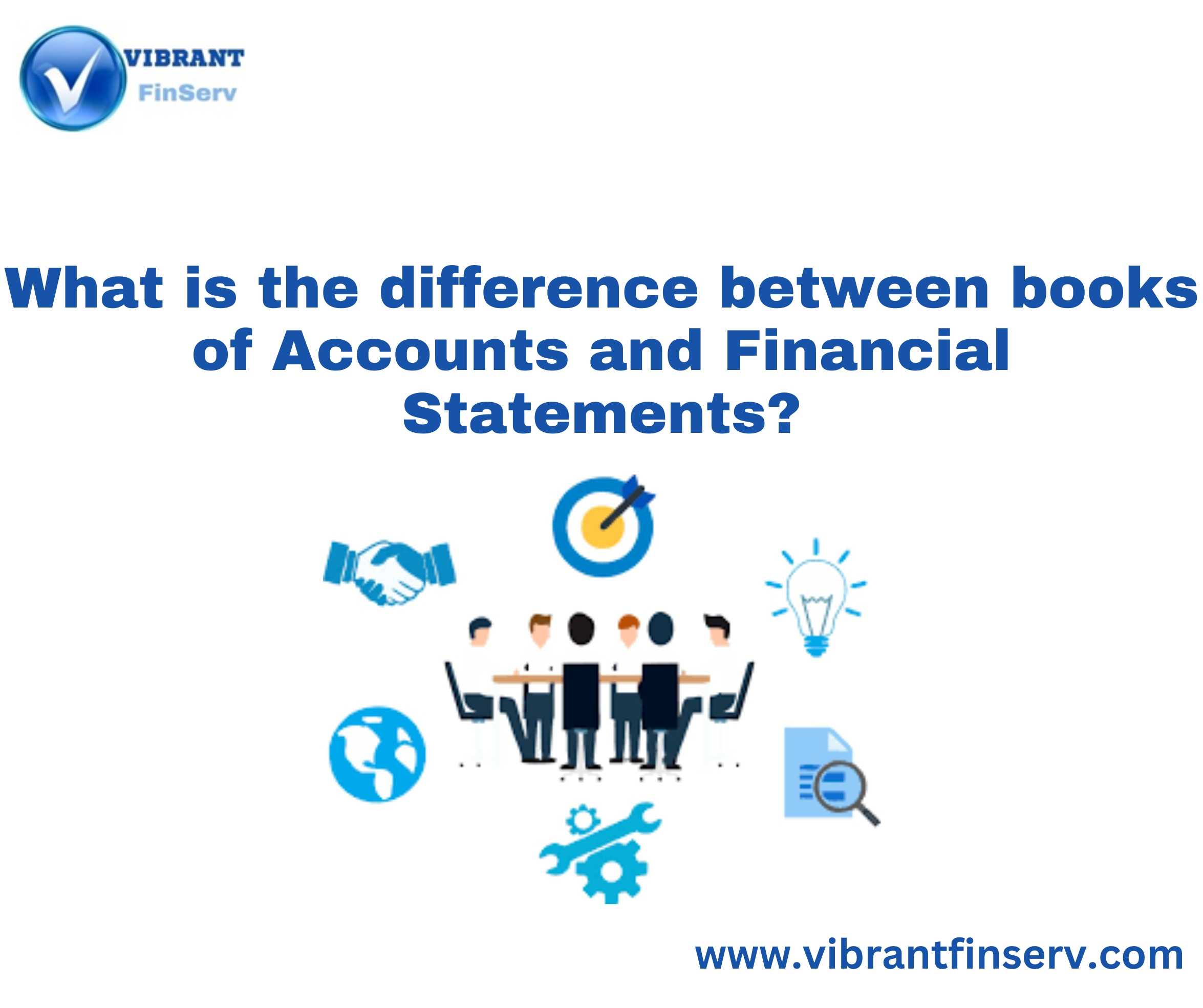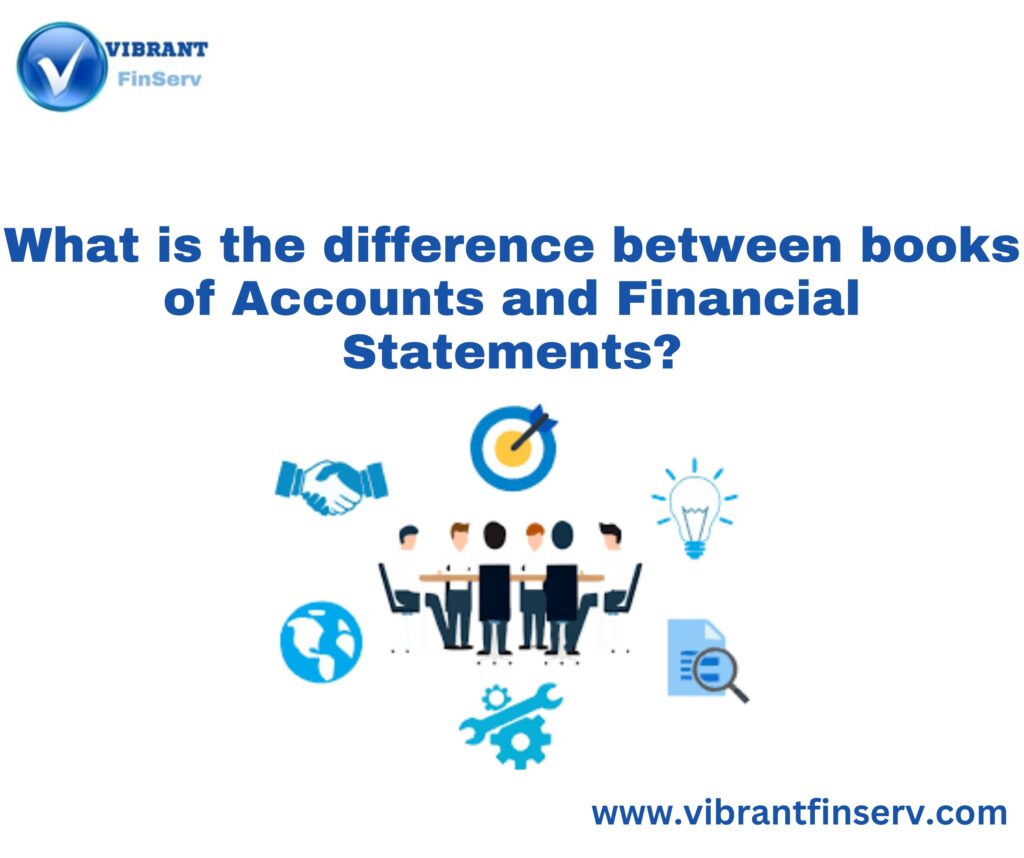



Introduction
In the world of finance and accounting, two terms frequently arise: Books of Accounts and Financial Statements. Both are essential for businesses, yet they serve different purposes and have distinct characteristics. Understanding the difference between these two is crucial for business owners, accountants, and stakeholders alike.
1. What are Books of Accounts?
Books of Accounts refer to the detailed records where every financial transaction of a business is documented. These books are the foundation of a company’s accounting system and provide a day-to-day recording of all transactions. Common books of accounts include:
- Journal: A record of all financial transactions as they occur.
- Ledger: Summarizes transactions into specific accounts such as sales, expenses, and assets.
- Cash Book: A record of all cash receipts and payments.
- Purchase and Sales Register: Tracks purchases and sales transactions.
Books of Accounts are maintained continuously and provide raw data about the business’s financial activities.
Key Characteristics:
- Detailed Transactional Data: Includes each transaction’s date, amount, and purpose.
- Real-Time Updates: Recorded daily or as transactions occur.
- Legal Requirement: Many countries legally require businesses to maintain Books of Accounts for tax and regulatory purposes.
- Internal Use: Primarily used by accountants and financial managers for internal control and financial analysis.
2. What are Financial Statements?
Financial Statements are formal summaries of a company’s financial position and performance over a specific period, typically quarterly or annually. They are prepared using the information from the Books of Accounts and offer an overall view of the business’s financial health. The key components of Financial Statements are:
- Income Statement (Profit and Loss Statement): Shows the company’s revenues, expenses, and profits over a period.
- Balance Sheet: Summarizes the company’s assets, liabilities, and equity at a specific point in time.
- Cash Flow Statement: Reports cash inflows and outflows, showing how cash is generated and spent.
- Statement of Changes in Equity: Reflects changes in the company’s equity over time, due to profits, losses, dividends, etc.
Financial Statements are crucial for external stakeholders like investors, creditors, and regulators, as they provide an understanding of a company’s financial health and performance.
Key Characteristics:
- Summarized Data: Derived from Books of Accounts but presented in summary form.
- Prepared Periodically: Typically prepared at the end of a financial period (quarterly or annually).
- Regulatory Requirement: Public companies must prepare and publish Financial Statements as per accounting standards.
- External Use: Used by stakeholders such as investors, lenders, and tax authorities to assess financial performance and make decisions.
3. Key Differences Between Books of Accounts and Financial Statements
| Aspect | Books of Accounts | Financial Statements |
|---|---|---|
| Purpose | To record all individual transactions in detail. | To summarize and report financial performance. |
| Nature | Detailed and transactional. | Aggregated and summary-based. |
| Frequency of Preparation | Continuous or real-time. | Periodically (quarterly, annually). |
| Legal Requirement | Required by law for most businesses. | Required for reporting to external stakeholders. |
| Users | Accountants, internal management. | Investors, lenders, tax authorities, management. |
| Components | Journals, ledgers, cash books, etc. | Income statement, balance sheet, cash flow. |
| Format | No standardized format; based on internal policies. | Must follow specific accounting standards (e.g., GAAP, IFRS). |
| Analysis | Provides raw data for internal financial tracking. | Provides insight into the company’s overall financial health. |
4. How Do They Work Together?
Books of Accounts and Financial Statements are closely connected. The Books of Accounts contain the raw data that is later processed and summarized to create the Financial Statements. In essence, Books of Accounts serve as the input, while Financial Statements are the output. Without accurate Books of Accounts, the Financial Statements would not be reliable or meaningful.
For instance:
- Transactions recorded in the Sales Ledger form the basis for the revenue reported in the Income Statement.
- Purchase transactions affect both the Cash Flow Statement and the Balance Sheet (inventory and cash).
Both are essential tools in the financial management and decision-making processes of a business.
FAQs:
What is the difference between revenue and profit?
Revenue is the total income from sales, while profit is what remains after deducting expenses from revenue.
What is a business plan?
A business plan is a formal document outlining the goals, strategies, market analysis, and financial projections for a business.
What is a cash flow statement?
A cash flow statement shows the inflow and outflow of cash within a company over a period.
What is compound interest?
Compound interest is interest calculated on the initial principal and also on the accumulated interest from previous periods.
What is depreciation?
Depreciation is the reduction in the value of an asset over time, typically due to wear and tear.
What is the role of a financial auditor?
A financial auditor examines a company’s financial records to ensure accuracy and compliance with accounting standards.
What is working capital?
Working capital is the difference between a company’s current assets and current liabilities, used to fund daily operations.
What is equity in a business?
Equity is the value of ownership in a company, calculated as assets minus liabilities.
For more information, visit this site: https://www.incometax.gov.in/
For further details access our website https://vibrantfinserv.com/

